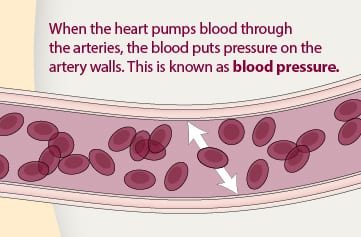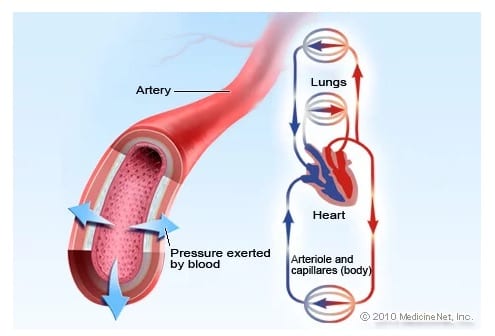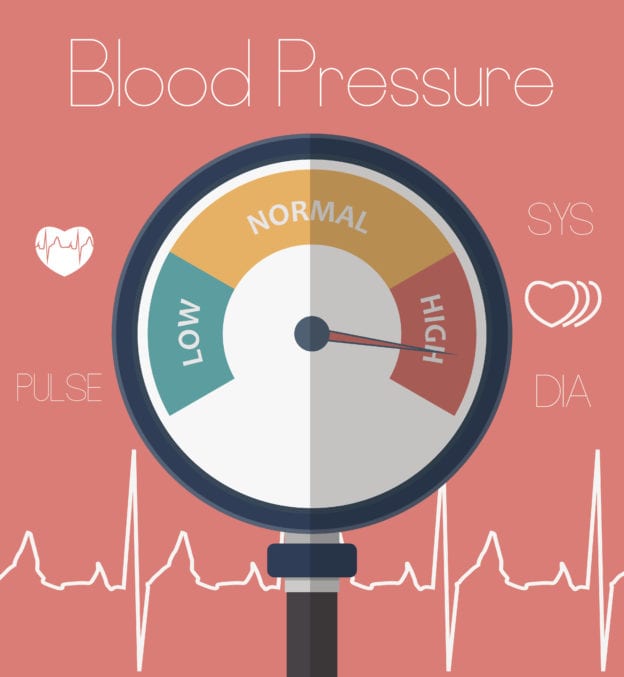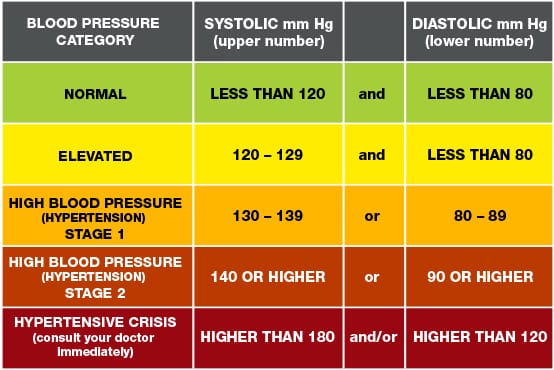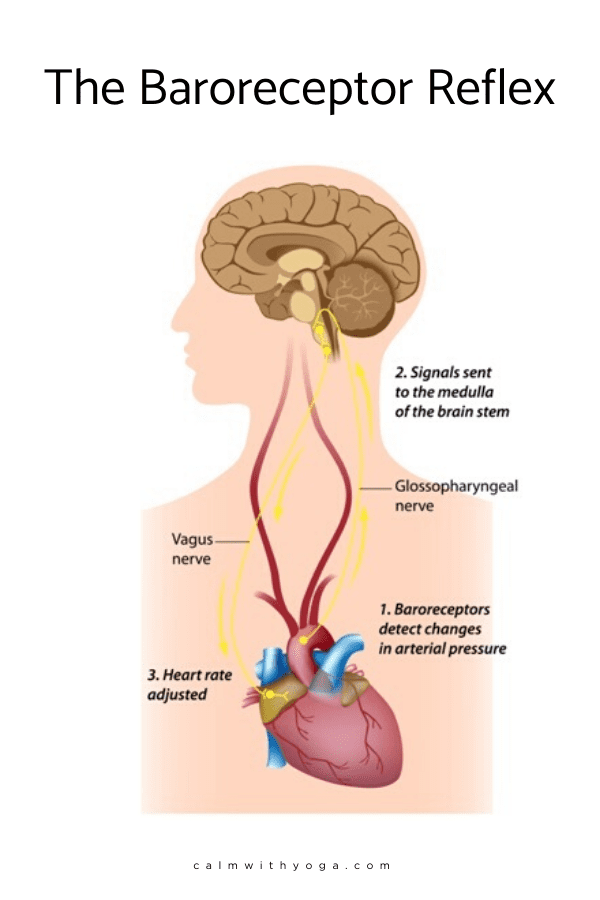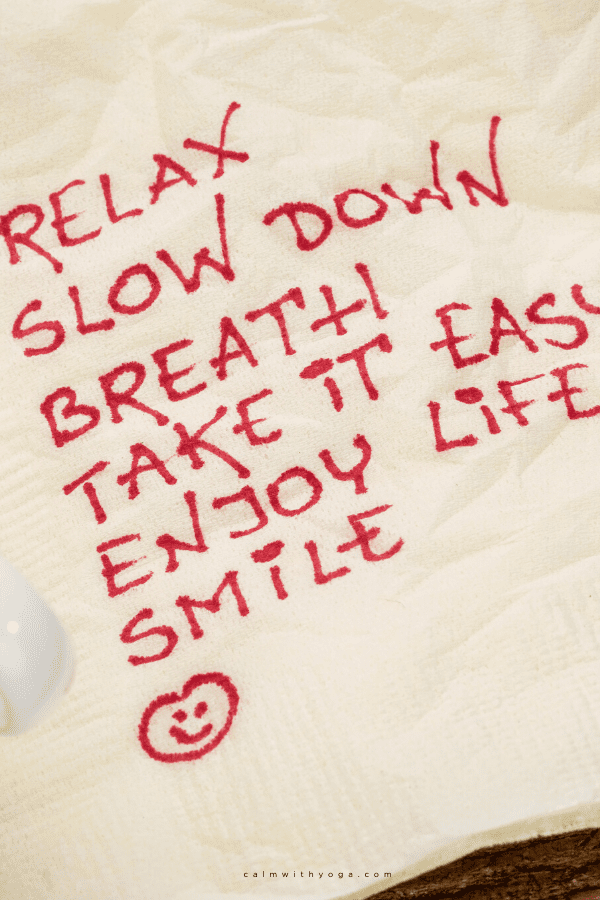– Mahatma Gandhi This can have a significant negative impact on quality of life, and if left unmanaged, often leads to heart and kidney failure, vision loss, loss of libido, and even increased risk of stroke. Luckily, there are effective natural ways to manage high blood pressure no matter your age. Most of them are easy-to-implement lifestyle changes that include managing stress and getting quality sleep. Many health care providers now recommend physical yoga practice (asana), meditation, and pranayama (yoga breathing) as effective adjunct therapies. Deep breathing exercises are known to have a calming effect on the nervous system by activating the relaxation and regeneration response while also decreasing an overactive stress response. This not only helps to quiet your mind, but it’s also been shown to lower your heart rate and blood pressure…
What is blood pressure?
Blood pressure (BP) is one of the four major vital signs of the body: 1 – Blood pressure 2 – Heart rate 3 – Breathing rate 4 – Body temperature These vitals are a metric of how well your body is functioning. BP is the pressure of blood contained in your artery walls. Arteries transport blood from the heart to other body parts. It’s completely normal for your BP to slightly fluctuate throughout the day as you move about your activities.
What are the normal BP parameters?
There are two parameters used to measure BP: 1 – Systolic BP – measures pressure in arteries whilst the heart is beating 2 – Diastolic BP – measures pressure in arteries in between heartbeats. According to the American College of Cardiology/American Heart Association Guideline for the Prevention, Detection, Evaluation, and Management of High Blood Pressure the ranges are as follows: (2) Normal BP range is under 120/80 (systolic: <120, diastolic: <80) Elevated BP range is 120–129/<80 (systolic: 120-129, diastolic: <80) High BP (hypertension) range is anything higher than 130/80 (systolic: >130, diastolic: >80)
What are the symptoms of high BP?
High BP/ hypertension is often not accompanied by obvious symptoms. Truth: High blood pressure is a largely symptomless “silent killer.” If you ignore your blood pressure because you think a certain symptom or sign will alert you to the problem, you are taking a dangerous chance with your life. – American Heart Association It’s estimated that about one-third of people with hypertension don’t know they have it. (3) That’s why it’s so important to go for an annual physical exam every year. You might need even more if you’re older or your doctor determines it necessary. The only way to know if you have high blood pressure is to actually get measured by your health care provider.
What are the risks of chronic high BP?
As mentioned, high BP can negatively affect your heart, kidneys, brain, and eyes. A few people with high blood pressure may have headaches, shortness of breath or nosebleeds, but these signs and symptoms aren’t specific and usually don’t occur until high blood pressure has reached a severe or life-threatening stage. – Mayo Clinic It can also put you at risk of developing heart disease, heart failure, heart attack, and stroke. Also alarming – having hypertension in midlife is linked to mental/cognitive decline and even dementia. (4)
What can I do to naturally lower BP?
One more possible item on the list: Application of CBD (Cannabidiol). In a 2017 study published in the JCI Insight Journal, researchers concluded that a single dose of CBD reduced resting blood pressure and the blood pressure response to stress.
How can Pranayama (yoga breathing) help me lower BP?
The respiratory system is intimately connected to the cardiovascular system Animals such as the rat and rabbit have fast breathing and so are extremely nervous, mentally unstable, emotionally restless, and live only for a short period of time. In contrast, the elephant and turtle are slow, deep breathers and consequently have calmer personality and longer lives. – Dr. Ananda Bhavanani, researcher & yoga therapist You can impact cardiovascular parameters by consciously manipulating the breath. This is because changes in breath rate lead to changes in heart rate, and this directly impacts BP via what’s called the Baroreflex (Baroreceptor Reflex). Baroreflex is one of your body’s homeostatic mechanisms (mechanisms meant to keep body functions balanced), that maintains BP equilibrated. Baroreflex sensitivity is the fastest mechanism to regulate BP by controlling heart rate.
Studies show that the regular practice of pranayama (yoga breathing) helps to normalize heart rhythms via Vagal stimulation. The Vagus nerve is one of the most important nerves for inducing the relaxation response via the parasympathetic nervous system while decreasing sympathetic nervous system activity. Think of the Vagus nerve (relaxation response) as the brake and sympathetic activity (stress response) as the gas pedal. Slow breathing helps your body take the foot off the gas pedal and instead activate the brake pedal. This mechanism is what helps to lower BP and heart rate. Pranayama is an ancient practice that involves intentional breath control and the conscious internal awareness of the whole breathing process. When practiced correctly, yogic breathwork can help strengthen mental health and well-being while increasing a sense of calm in the midst of what’s often felt as chaotic life. Prana means life force in Sanskrit. Pranayama practice involves the cultivation of life force (vital energy) via the intentional control of breathing patterns – inhaling, exhaling, and holding. These are three main phases usually included:
Inhalation (Puraka) Retention (Kumbhaka) Exhalation (Rechaka)
Some pranayama techniques such as Nadi Shodhana (Alternate Nostril Breathing), Sitali Pranayama (Cooling Breath), and Ujjayi Pranayama (Ocean Waves Breath) are meant to calm the nervous system down while other techniques such as Bhastrika are meant to rev up and energize the nervous system. This is why Bhastrika is not usually recommended for hypertension patients as it may worsen the condition.
This study says Sukha Purvaka Pranayama shows immediate positive effects on high BP (Hypertension):
Sukha Purvaka is a basic yogic breathing exercise which literally translates to “easy comfortable breathing,” or “the easy breath.” Sukha means comfortable, easy, or pleasant. Pūrvaka refers to the fact that this needs to be completed prior to other practices. (6) The immediate effect of Sukha pranayama (SP): (7) Twenty-three hypertensive patients performed SP for 5 minutes at the rate of 6 breaths per minute. Heart rate and BP were recorded before and right after their practice. Results revealed a significant decrease in heart rate and systolic pressure. Researchers concluded that SP at the rate of 6 breaths per minute can reduce BP within 5 minutes of practice. More research is warranted on this subject as a sample set of twenty-three is quite small.
How To Practice Sukha Purvaka:
There seems to be a slight difference in how the technique is practiced in the study mentioned above and how it is taught by yoga teacher and author Swami Satchidananda. The study instructed its participants to breathe with an inhalation/exhalation ratio of 1:1, 5 counts for the inhale and 5 counts for the exhale. Swami Satchidananda instructs Sukha Pūrvaka has an inhalation/exhalation ratio of 1:2. So for example, if we were to start with a 5 second inhale, we’ll follow with a 10 second exhale. (8) You can gradually increase this based on your own personal capacity, for example expanding to 10 seconds inhale, followed by a 20 second exhale. Once you’ve got this down you can add some breath retention, for example: inhale for 10 seconds, hold for 5 seconds, and exhale for 20 seconds. Don’t get hung up on the length of the breaths. Instead, focus on the number of cycles.
Basic Sukha Pūrvaka (without retention):
Step 1 – Sit upright and get comfortable – release any tension from your shoulders, neck, and jaw. So, even without retention, if we can do thirty or forty Sukha Purvakas at a stretch, it will be very beneficial.” – Swami Satchidananda Step 2 – Inhale for 5 seconds Step 3 – Exhale for 5 or 10 seconds Step 4 – Repeat 30 times or for 30 cycles
Basic Sukha Pūrvaka (with retention):
Step 1 – Sit upright and get comfortable – release any tension from your shoulders, neck, and jaw. Step 2 – Inhale for 5 seconds Step 3 – Hold for 2-5 seconds Step 4 – Exhale for 5 or 10 seconds Step 5 – Repeat 30 times or for 30 cycles Notice how you feel after completing one full round (30 cycles). This pranayama exercise is really centering for the brain and heart, so it’s great to do before an important meeting, a big presentation, a challenging conversation, or when you need to access your grounded and intuitive side. It’s also perfect for creativity. It’s also important to note that pranayama breathing techniques aren’t a magic pill. In order to notice a difference and get results, you need to stick with it daily. Just five minutes a day of this practice can really help to improve physical, emotional, and mental health and well-being. REFERENCES : (1) https://www.heart.org/en/news/2018/05/01/more-than-100-million-americans-have-high-blood-pressure-aha-says (2) https://www.cdc.gov/bloodpressure/about.htm?CDC_AA_refVal=https%3A%2F%2Fwww.cdc.gov%2Fbloodpressure%2Ffaqs.htm (3) https://www.webmd.com/hypertension-high-blood-pressure/guide/hypertension-symptoms-high-blood-pressure (4) https://www.ncbi.nlm.nih.gov/pmc/articles/PMC5729797/ (5) https://food.ndtv.com/food-drinks/ayurveda-for-hypertension-8-foods-and-herbs-that-may-help-cut-down-high-blood-pressure-1728599 (6) http://icyer.com/documents/Sukha%20purvakapranayama-article.pdf (7) https://www.ncbi.nlm.nih.gov/pubmed/22398346 (8) Satchidananda, Swami. The Yoga Sutras of Patanjali: Commentary on the Raja Yoga Sutras by Sri Swami Satchidananda, 1978
